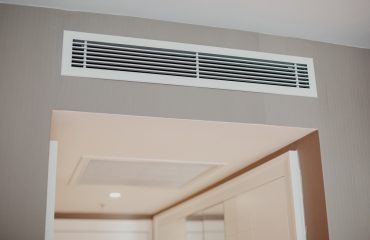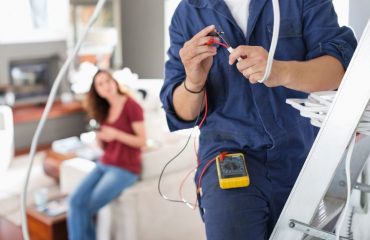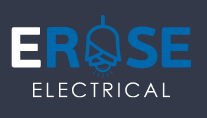Power points are essential in today’s homes, where the demand for accessible power sources has increased with the number of devices and appliances in use. Whether for improved functionality in the kitchen, additional outlets in the home office, or convenient charging points in the living area, installing new power points enhances both convenience and usability throughout a home. But how much does it cost to get new power points installed in Australia? This guide explores the average costs, factors affecting installation prices, and budget-friendly tips to help homeowners plan their power point installations effectively.
Average Cost of Power Point Installation
In Australia, the cost of installing power points varies depending on the type and location. Below is an outline of the typical price ranges for common power point options:
- Single Outlets: Installing a standard single outlet costs between AUD $70 and $120 per point, depending on the outlet’s location and any additional work required for installation. Single outlets are ideal for low-power devices or areas with limited space.
- Double Outlets: Double power points, which offer two sockets in one, are slightly more expensive, with prices ranging from AUD $80 to $150 per point. Double outlets provide greater convenience and are especially useful in high-traffic areas or rooms where multiple devices are used.
- Outdoor Outlets: For external areas such as patios, garages, or garden spaces, weatherproof outdoor power points typically cost between AUD $120 and $200 per outlet. These outlets are specially designed to withstand the elements and provide safe outdoor power access.
- USB Combination Outlets: Modern outlets that combine USB charging ports with standard sockets cost more due to their additional functionality, with prices ranging from AUD $120 to $250 per point. These outlets are ideal for tech-savvy households where USB charging is frequently needed.
These cost estimates provide a baseline, but installation complexity and specific requirements can influence the final price. Choosing the right outlet type for each room helps balance functionality and budget considerations.
Factors That Affect Installation Costs
Several factors can impact the cost of power point installation. Understanding these factors helps homeowners budget effectively and anticipate potential additional expenses:
- Accessibility: Easy-to-reach locations on standard walls typically have lower installation costs. However, if the installation site is difficult to access, such as inside cabinets or high on walls, labour costs may increase due to additional work required.
- Wiring and Circuit Capacity: Older homes may need updated wiring to accommodate new power points, particularly if existing circuits are not designed for modern electrical loads. Upgrading wiring can add between AUD $50 and $200 per outlet, depending on the scope.
- Additional Circuits: For high-power areas like kitchens and garages, or when installing multiple outlets, it may be necessary to add dedicated circuits to prevent overloads. Installing a new circuit increases costs, typically by AUD $200 to $500, depending on the panel and the home’s layout.
- Switchboard Upgrades: In some cases, older switchboards may not support additional power points without an upgrade. A switchboard upgrade can add between AUD $500 and $1,500 to the overall cost if it’s required to meet modern safety standards.
- Electrician Rates: Labour costs vary across Australia, with electricians typically charging between AUD $70 and $120 per hour. More complex installations may require additional hours, so the type and number of outlets can impact the total labour cost.
Factoring in these variables allows homeowners to plan their power point installations with a clear understanding of potential expenses.
Tips for Budget-Friendly Power Point Installation
Adding new power points doesn’t have to be overly expensive. Here are some cost-effective strategies for managing installation costs:
- Plan Strategic Placements: When installing new outlets, consider locations where multiple devices are frequently used, such as near desks, entertainment centres, and kitchen workspaces. Installing outlets in high-use areas reduces the need for future additions and provides a better return on investment.
- Combine Installations: If you’re planning other electrical work, such as installing lighting or upgrading circuits, consider having all work completed at the same time. Electricians often offer package rates for multiple jobs, reducing overall labour costs.
- Opt for Double Outlets: Rather than installing multiple single outlets, choose double outlets in areas with high power demand. Double points offer additional access without requiring extra installations, saving on both materials and labour.
- Check Existing Circuits: In some cases, existing circuits can handle additional power points, especially in areas that don’t require high energy loads. Consulting with an electrician before installation can determine if new circuits are necessary, potentially saving costs.
- Use Trusted Electricians: Reliable electricians provide clear estimates and ensure quality work, helping to avoid costly repairs or adjustments later on. Comparing quotes from multiple providers can also help find the best price without sacrificing quality or safety.
Following these tips allows homeowners to achieve functional power point installations while minimising unnecessary expenses.
When determining how much does it cost to get new power points installed, Australian homeowners should consider factors like outlet type, installation complexity, and accessibility. On average, power point installations range from AUD $70 to $250 per outlet, with additional costs for outdoor or specialised points. By understanding the variables that impact installation costs and implementing budget-friendly strategies, homeowners can achieve convenient and practical power access throughout their homes without exceeding their budget. A well-planned power point installation enhances home functionality and adds value, making it a worthwhile investment for any Australian household.




